Mahdad Alizadeh. nonexisted dialogues: the Reverse Flow
21 June to 23 August 2025 ⟶ Galerie
installation view
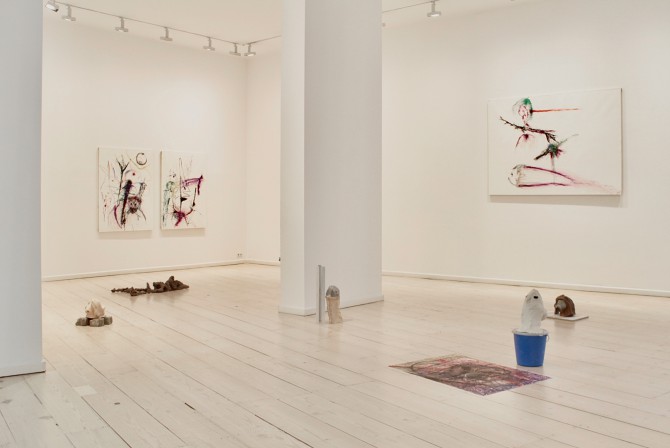
installation view
Snake, 2025, oil pastel on paper, 207 x 148 cm
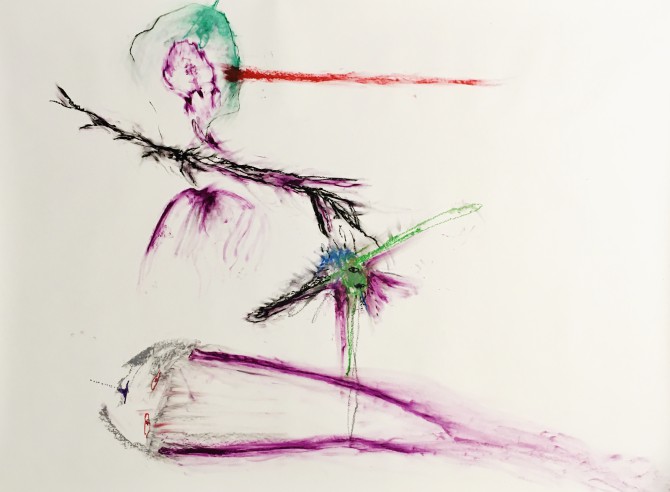
Snake, 2025, oil pastel on paper, 207 x 148 cm
Businessman, 2025, clay (partly glazed), 40 x 20 x 18 cm
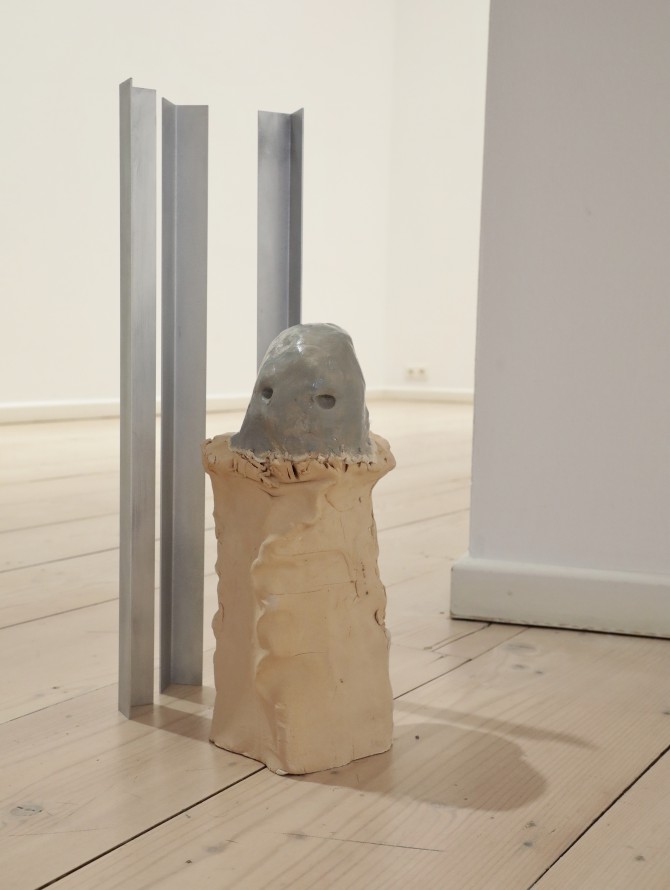
Businessman, 2025, clay (partly glazed), 40 x 20 x 18 cm
A Dark Night Is Coming, 2025, oil pastell on paper, 71 x 104 cm
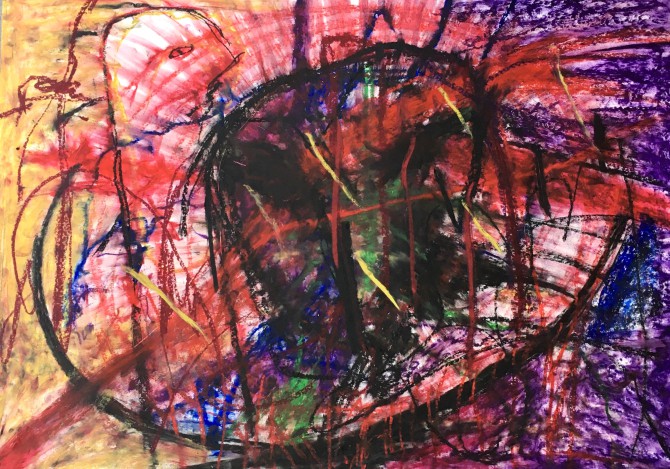
A Dark Night Is Coming, 2025, oil pastell on paper, 71 x 104 cm
Death Facing, 2024, clay (partly glazed), 34 x 22 x 27 cm
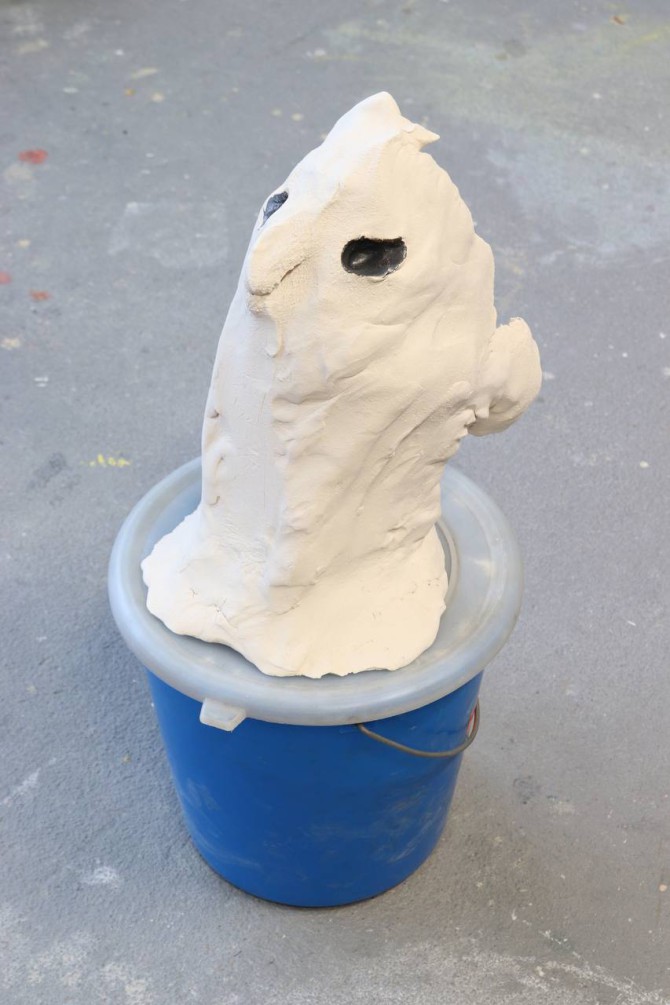
Death Facing, 2024, clay (partly glazed), 34 x 22 x 27 cm
POTK at Night, 2025, oil pastel on paper, 112,5 x 148 cm
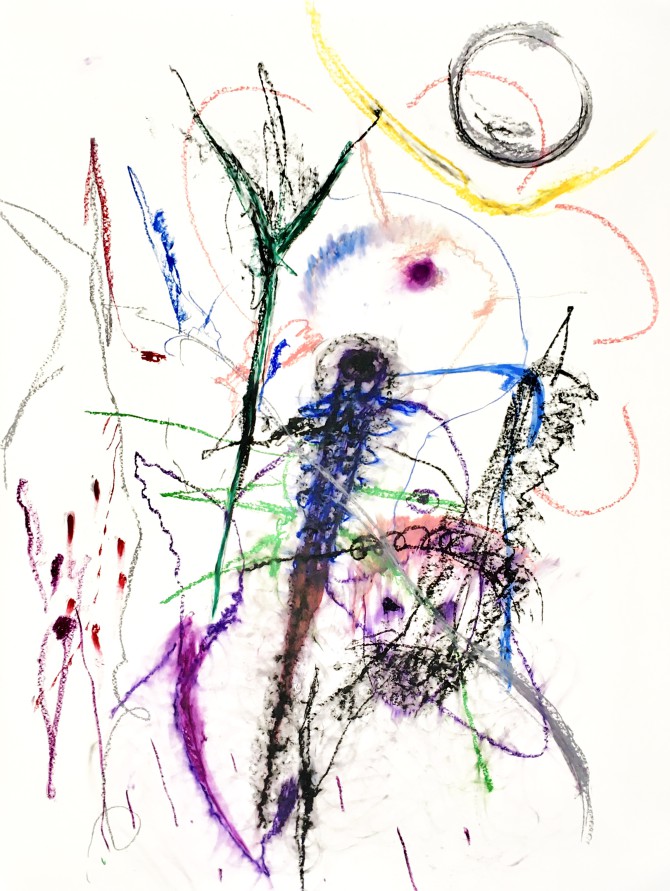
POTK at Night, 2025, oil pastel on paper, 112,5 x 148 cm
Part I / BODY / Drifting, 2021, fired clay, 15 x 40 x 22 cm
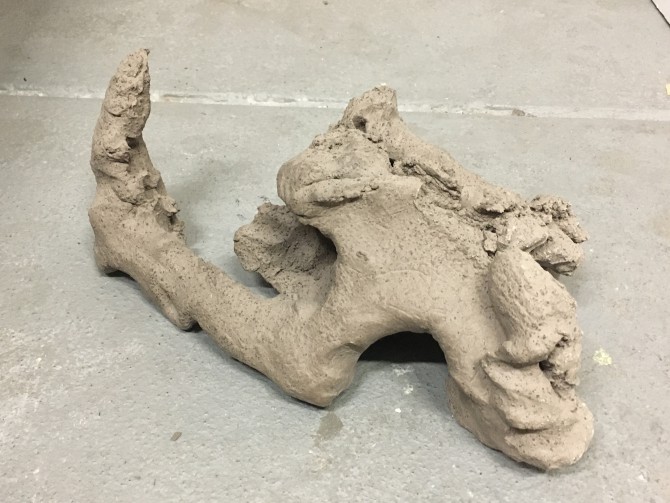
Part I / BODY / Drifting, 2021, fired clay, 15 x 40 x 22 cm
How low can you go?, 2024, glazed clay, 22 x 26 x 25 cm
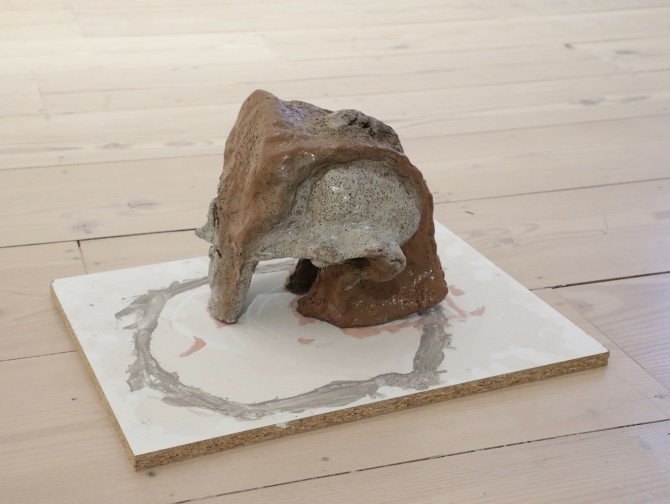
How low can you go?, 2024, glazed clay, 22 x 26 x 25 cm
In love with a rock, 2025, fired clay, 20 x 20 x 25 cm
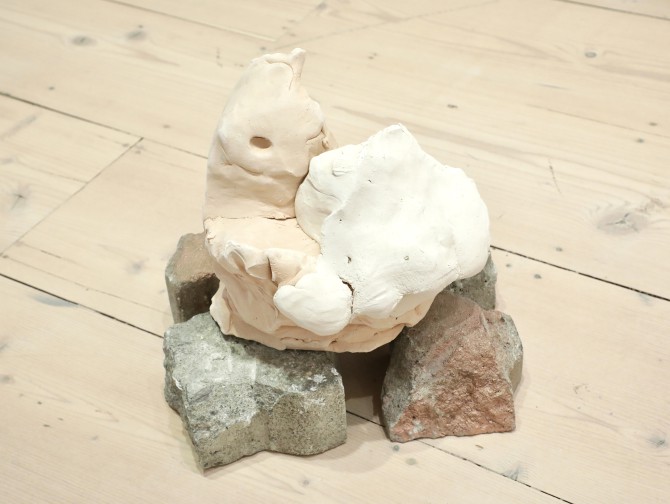
In love with a rock, 2025, fired clay, 20 x 20 x 25 cm
installation view
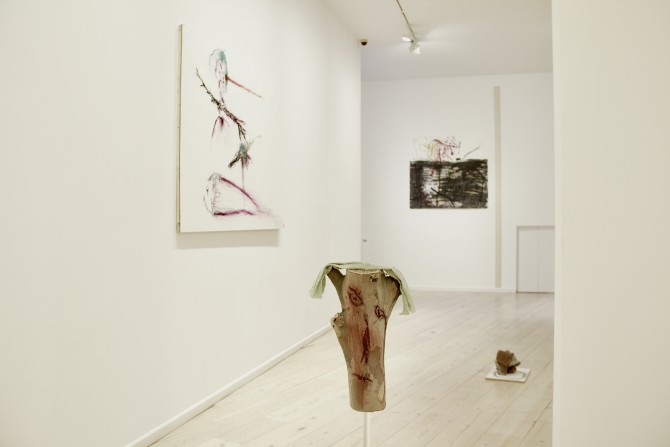
installation view
installation view
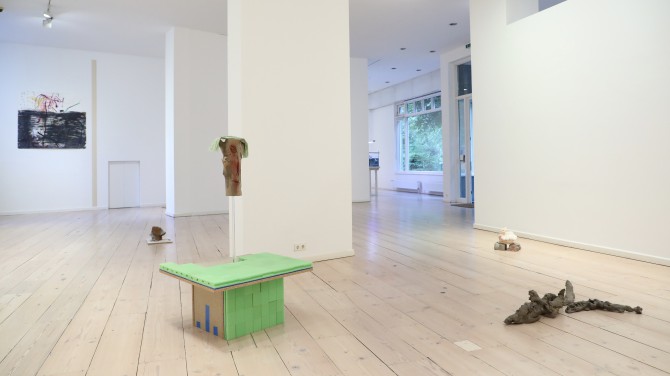
installation view
MAD!, 2025, oil pastel on wood, 43 x 27 x 20 cm
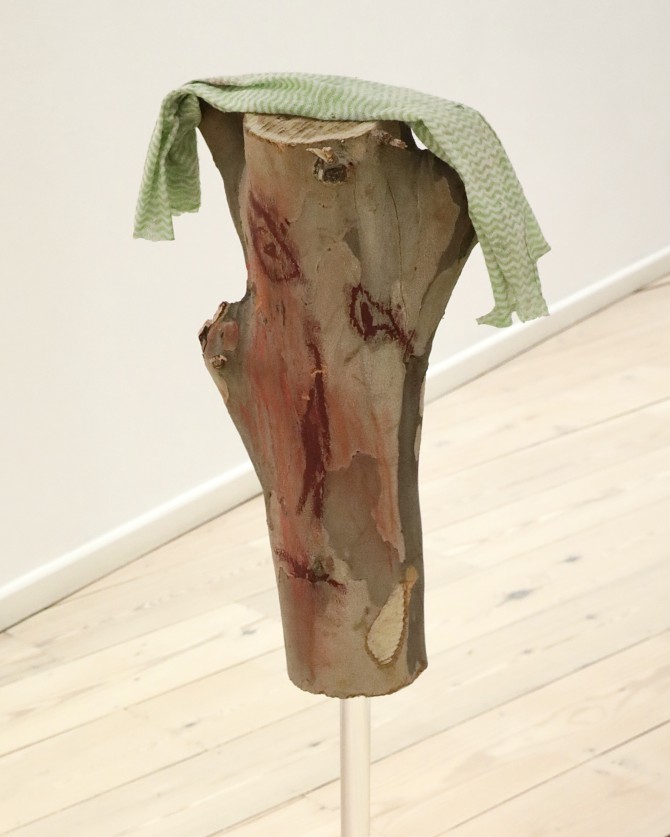
MAD!, 2025, oil pastel on wood, 43 x 27 x 20 cm
Smoke, 2025, mixed technique on paper, 158 x 148 cm

Smoke, 2025, mixed technique on paper, 158 x 148 cm
installation view
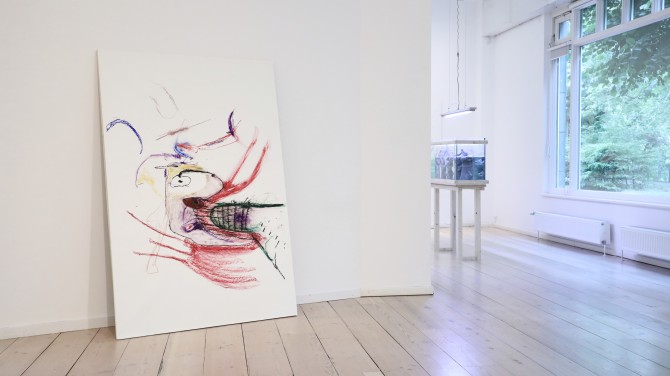
installation view
installation view
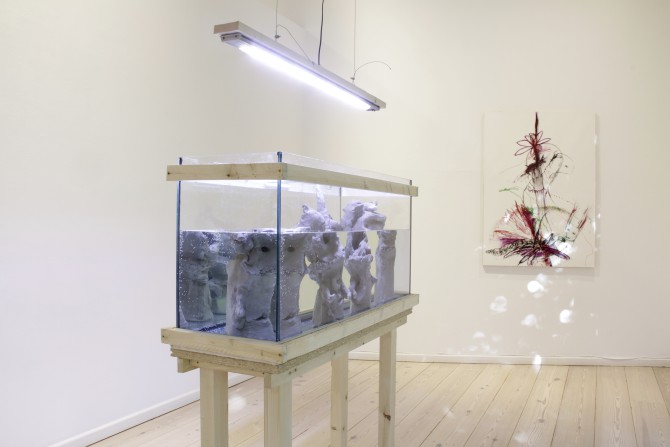
installation view
Phases of Love, 2024-2025, fired clay, 4 sculptures each 40 x 25 x 25 cm
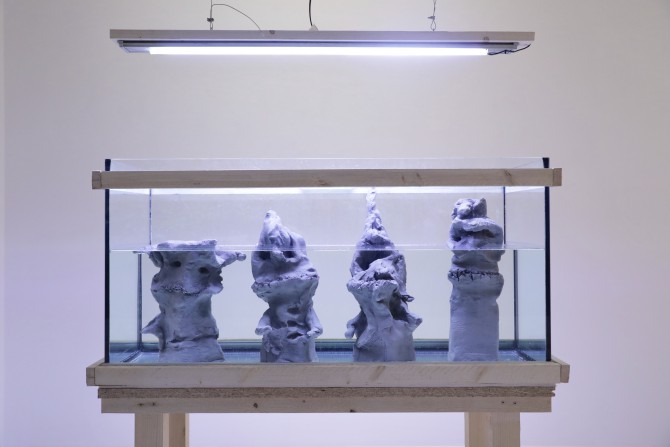
Phases of Love, 2024-2025, fired clay, 4 sculptures each 40 x 25 x 25 cm
Part of Phases of Love, 2024-2025, fired clay, 4 sculptures each 40 x 25 x 25 cm
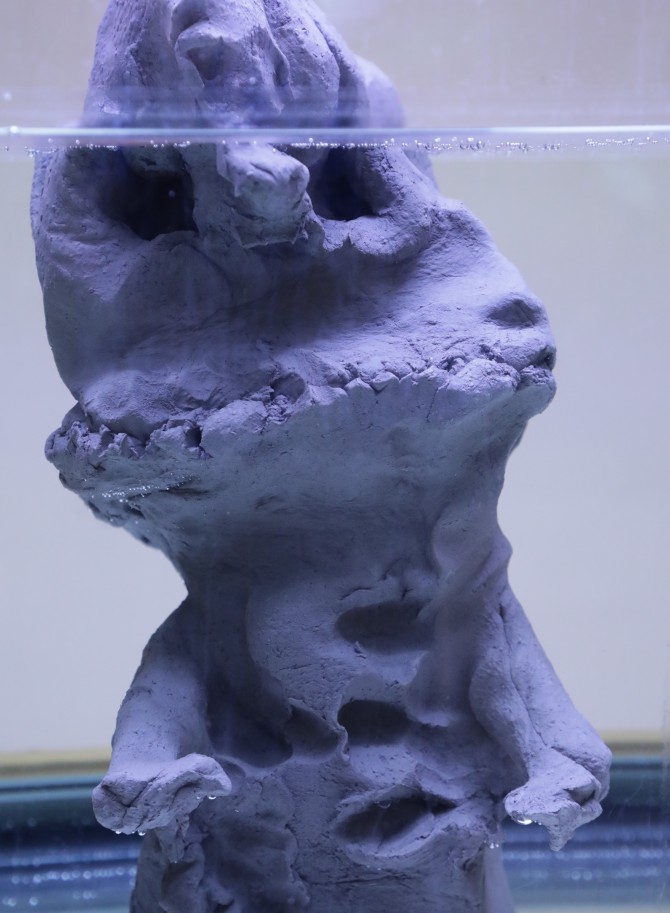
Part of Phases of Love, 2024-2025, fired clay, 4 sculptures each 40 x 25 x 25 cm
Purple Flower, 2025, oil pastell on paper, 106,5 x 148 cm
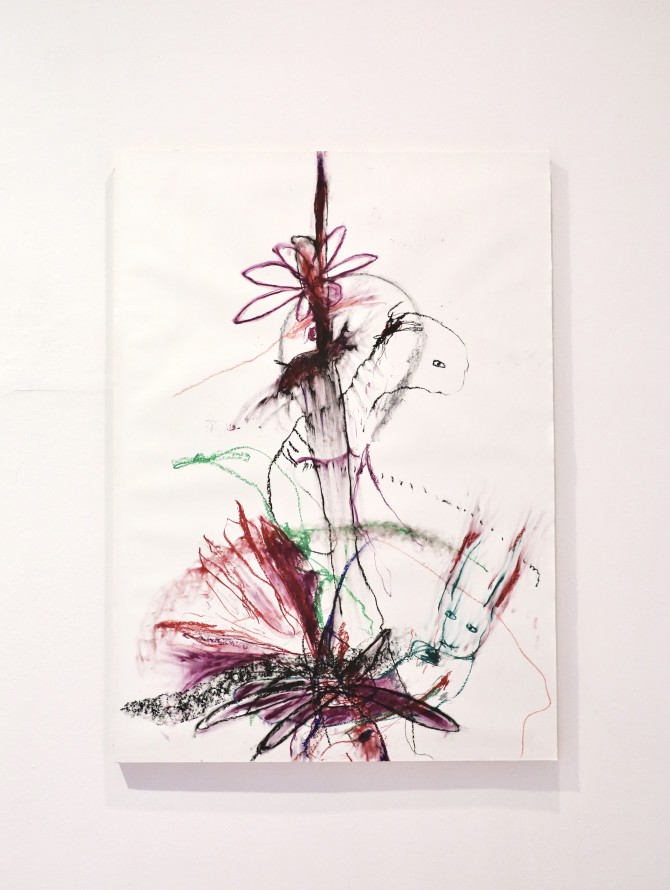
Purple Flower, 2025, oil pastell on paper, 106,5 x 148 cm
installation view
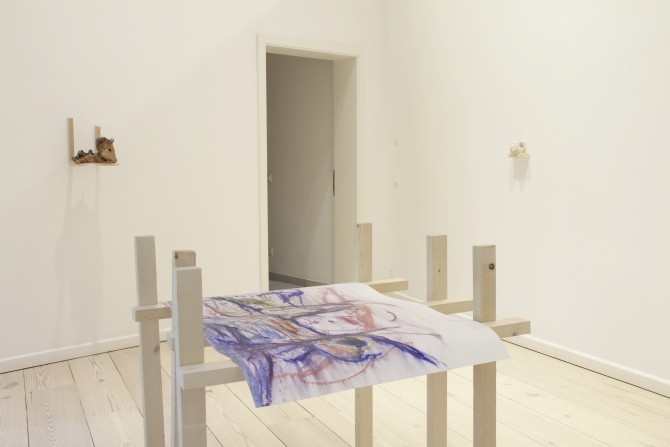
installation view
Water in my head, 2024, glazed clay , 16 x 27 x 19 cm
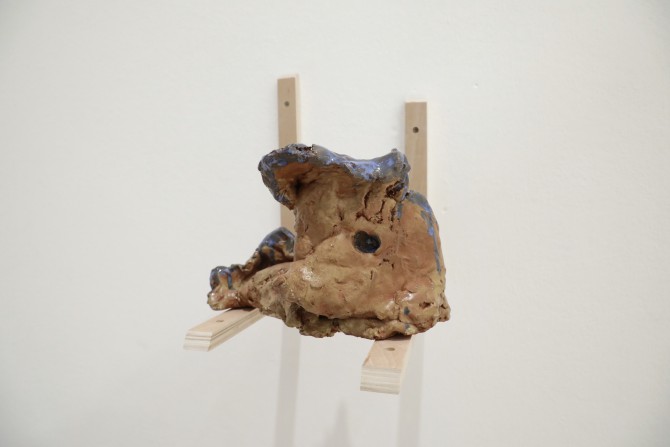
Water in my head, 2024, glazed clay , 16 x 27 x 19 cm
Aquarium, 2025, oil pastel on paper, 71 x 104 cm
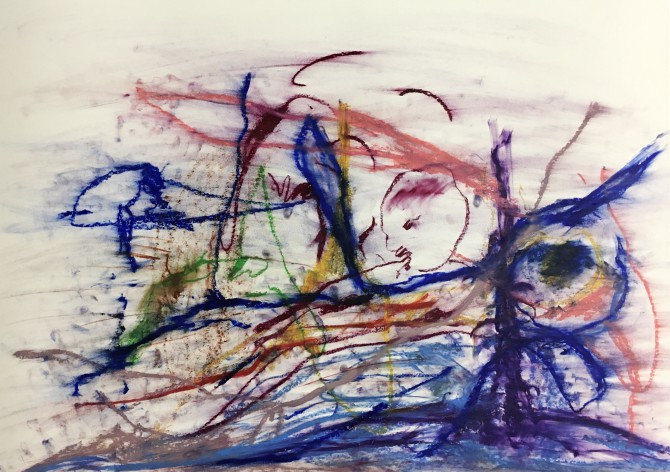
Aquarium, 2025, oil pastel on paper, 71 x 104 cm
installation view
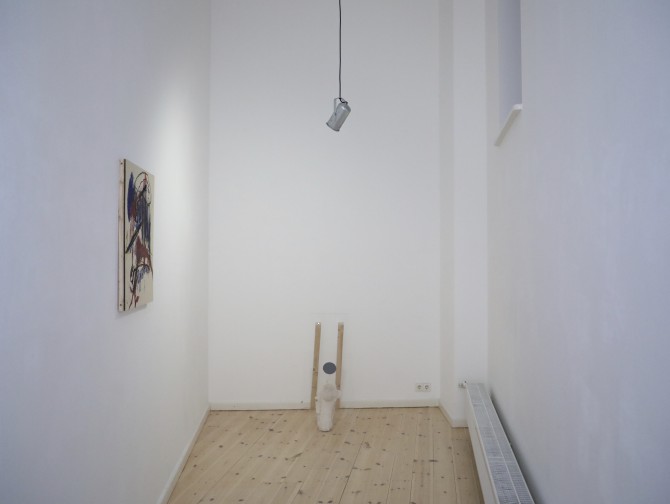
installation view
Blind, 2025, fired clay, 40 x 25 x 25 cm
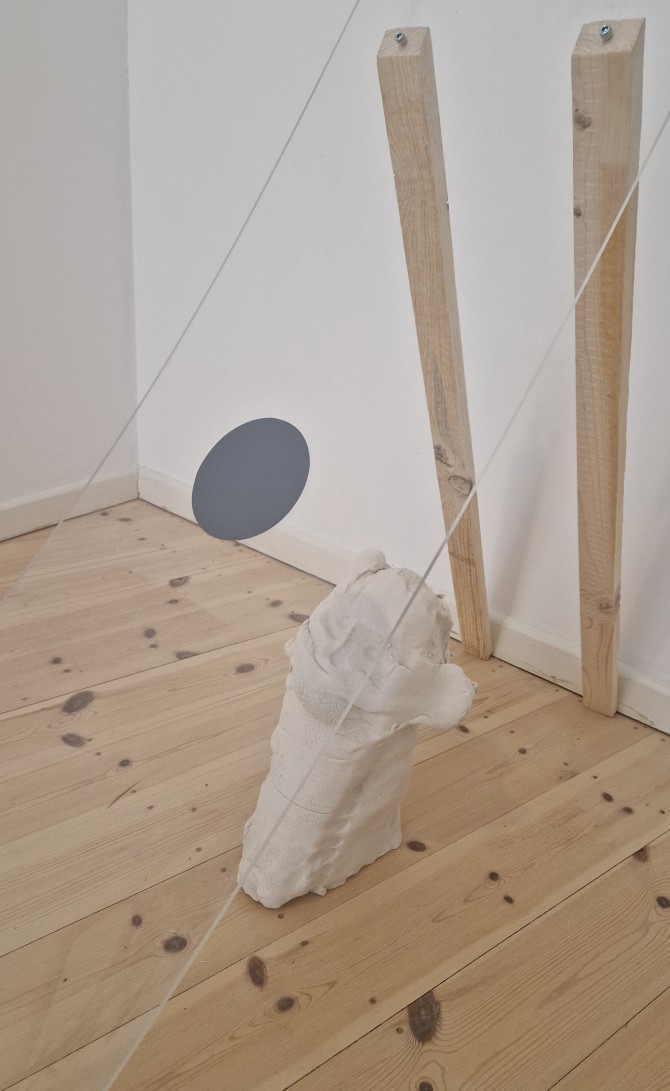
Blind, 2025, fired clay, 40 x 25 x 25 cm
installation view
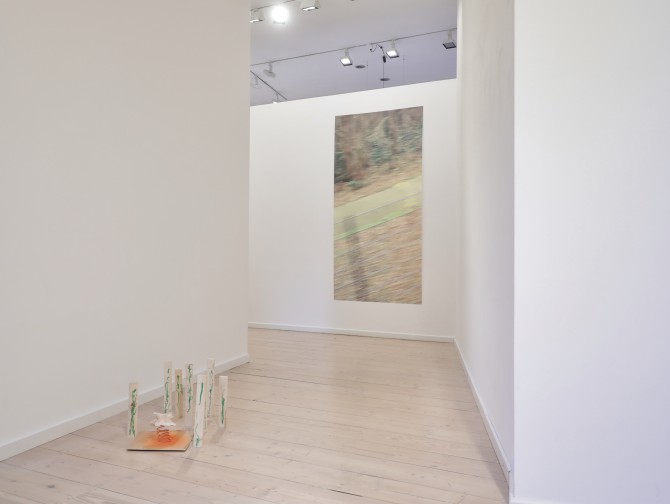
installation view
Butterfly, 2025, installation made of clay sculpture, sprayed cardboard, painted wood, spring
Overall installation ca. 40 x 56 x 80 cm
Overall installation ca. 40 x 56 x 80 cm
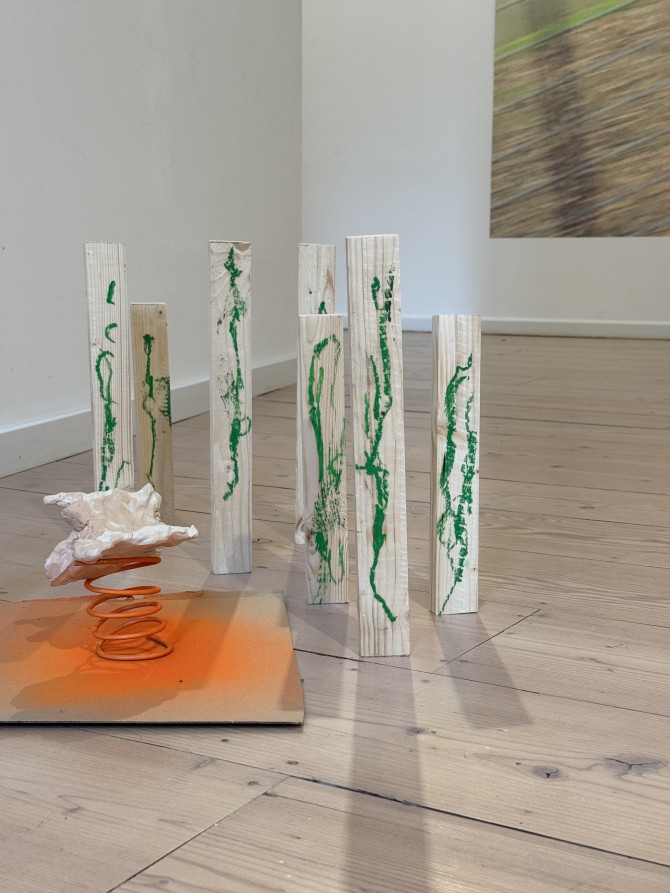
Butterfly, 2025, installation made of clay sculpture, sprayed cardboard, painted wood, spring
Overall installation ca. 40 x 56 x 80 cm
Overall installation ca. 40 x 56 x 80 cm
installation view

installation view
When you drank rain in the garden, that was for this!, 2022, glazed clay, 29 x 30 x 26 cm
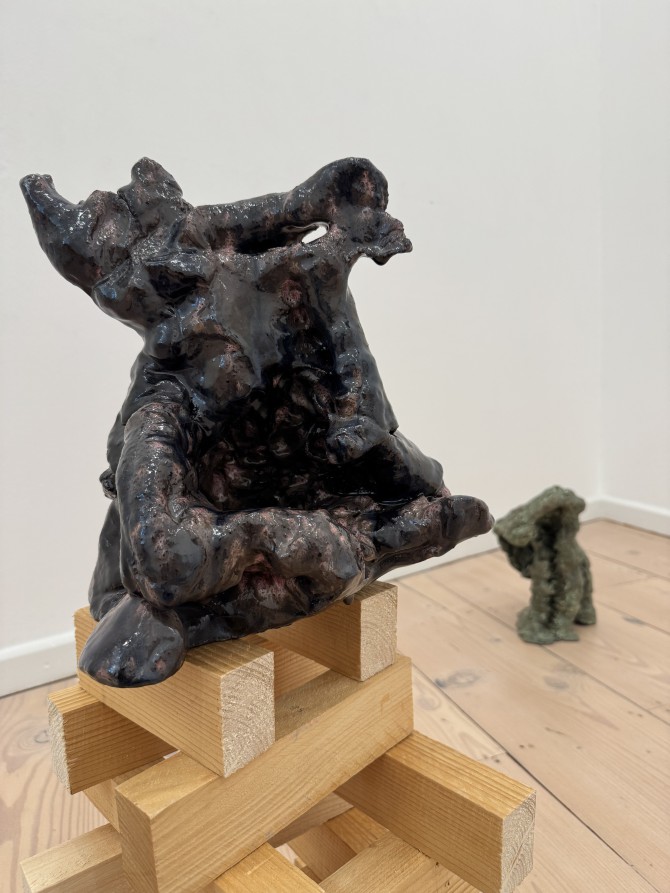
When you drank rain in the garden, that was for this!, 2022, glazed clay, 29 x 30 x 26 cm
Green Home, 2023, glazed clay, 33 x 26 x 20 cm
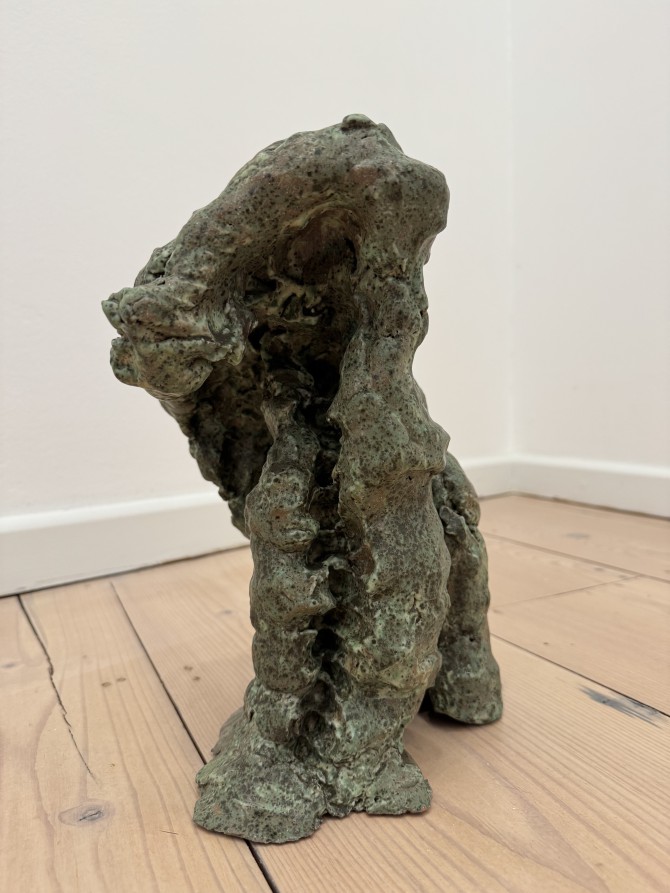
Green Home, 2023, glazed clay, 33 x 26 x 20 cm
Opening: June 20, 6 - 9 pm
Artist Talk in English: June 28 at 2 pm
Artist Talk in English: June 28 at 2 pm
Galerie Nothelfer is pleased to present a solo exhibition with new works by young sculptor and drawer Mahdad Alizadeh (*1993 in Tehran / Iran).
When looking around Mahdad Alizadeh’s studio, a generous loft space in the south of Berlin, one easily gets the feeling that faces gaze out between the self-built plinths, the stacks of drawings, and the shelves, which hold countless ceramic pieces. A second glance, and they are gone, as if the lumps of fired clay come alive only in the corner of one’s eye. "Recently," says the artist, "I have been drawing a lot of figures, just like I did when I started out as an artist, which comes from my high school education, where I was drawing faces."
Alizadeh doesn’t really plan. "My installations come together very intuitively. I work with limitations, with what I have, and with what I find in the streets — whatever makes an interesting piece. "Found morsels of wood, either fresh, but chopped apart, like the Venus of Milo, or worm-eaten, claim a place in the shows. So do household objects, such as brightly-colored-sponges, and they form a whole world, together with drawings, assemblages out of found objects on the verge of collapse — "I want to be free, with the way I install things," he says — only united by an overall sense of eclecticism, and by a play of opposites: natural and synthetic, found and the carefully placed, fluid and stiff, pristine and precarious.
However, clay anchors his practice, and it seems almost like the malleable material is a metaphor for the way he works: in flux, intuitive, and always in the moment. Alizadeh fires his ceramics in the studio, in a kiln hidden behind a cardboard box. Here he experimented with glazing, and here he conceived of pieces that kept getting bigger, although he did so only reluctantly. "I didn’t want to work with larger formats, because the faces are kind of naive, and if I go big, they might lose that. After a few try-outs, I slowly increased the size. My direction changed, and I got really into clay, it became more abstract" — but animals, bodies, trees, and nature are still a strong presence.
Eventually, one and a half years ago, Alizadeh’s work slowed down. "I became sick, and I couldn’t do anything. I stopped working," he says. As the artist recovered, he took up drawing. First with pastels, which has always been part of his practice. "This time, I was like a kid, this became my clay practice. I went to the studio every day. I started small, and the drawings on paper became bigger. This one" — he points to a large sheet of paper laid out on the floor — "is partly a sketch. Some appear too empty. But for me, at this point, they are finished." There is a moment when a drawing can be too much, when the tenderness of the empty paper is lost, forced out by the heaviness of lines, curves, and layered swirls — which, of course, can be interesting in itself. The big question when a work is achieved remains unanswered. "When I leave it, it’s finished. But I might go back to it."
This show starts with water, and with the color blue. Perhaps it is because Alizadeh recently travelled to Lisbon, maybe it is because water is closely linked to clay, or because it serves as a fitting metaphor for a process that is perpetually changing. That is only one connotation of water that emerges in this show, however. A large aquarium, placed on wooden frames, contains four submerged sculptures, lit from the top. The glaze protects the fired ceramics, and they compose a series about the phases of love: from falling in love, via the time of desire, to the end of it. The four pieces are anthropomorphic, but also not, they fall halfway between elementary architecture and eerily alive contortions. They may seem immobilized, like a museum display of lost loves, perfectly still and extremely quiet — unlike the rest of Alizadeh’s work, which is in constant becoming. But the underlying sentiment is one of crushing weight. "The last of the sculptures from "Phases of Love" is very heavy, the figure is lost, and it is staring very quietly. For me, it has the feeling of a drone, a heavy, deep vibration," says the artist. Like diving into a swimming pool, the submersion creates its own world.
Alizadeh considers space. Sometimes works are placed very differently, depending on the context, and for months, he plans and holds the center of an exhibition in his head: rooms, columns, corners, the space between. Ultimately, the installations come together very intuitively. This is only a seeming contradiction, and one wouldn’t be amiss in finding a playful component in his work.
Alizadeh’s graduate performance in 2019 was titled "Clayground." He set the space at Berlin’s Universität der Künste up like a playground, "like a kid at the beach," he says. "I was not thinking of a final product, I did not know what would happen." Alizadeh would interact with a large amount of clay, as sculptor and as performer simultaneously: digging, opening, and shaping it. In some way, this sense of play without a determinate end is integral to his studio practice too.
"Process," he says, "is important." The works exist at a point where material rawness and freedom meet. The primitive might be a feature, not a bug, and Alizadeh welcomes the limitations that are not conducive to an overly polished product. "Whatever I find," he says, "I like going with basic things and limitations, because the interesting stuff comes up in the process. The struggle and the process are very important for me." Throughout this exhibition, he placed large-scale, hand-made rulers, like a dialectical counterpart, as if to rein in the intuitive with exact measurements — nothing is true without its opposite.
(Text by Philipp Hindahl)
Please note our Summer Break: August 6 – 16